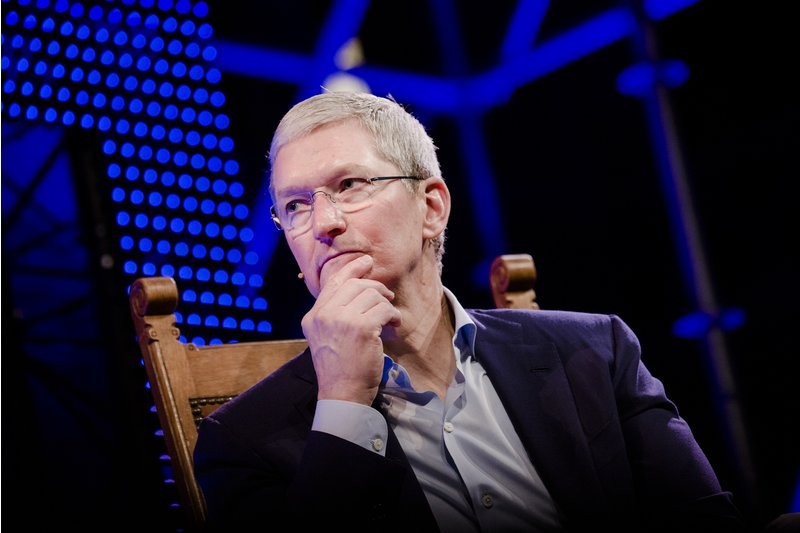美股暴跌,哪些公司最受伤?

|
2月6日下午,标普500指数(S&P 500)在引发混乱的暴跌之后强势反弹,收盘时上涨了1.74%。周二的这波猛涨让市场在抛盘浪潮中的整体跌幅从8.3%减少到了6.2%。然而,还有许多大型公司仍然在这次大出血中遭遇了调整级别的下跌。 我们将重点关注那些最大的企业,即标普500指数中市值最高的50支股票。尽管周二出现反弹,在这些一流公司中仍有10家公司的股票下跌超过10%——这也是“调整”级别的基准线。顺带一提,周二的暴涨也帮助美国市值最高的公司苹果(Apple)脱离了10%跌幅的俱乐部。苹果目前的跌幅是9.4%,不过因为公司的市值实在巨大,他们目前的缩水也是最严重的,减少了大约900亿美元。 亏损榜前三名的跌幅都超过了12%,它们分别是富国银行(Wells Fargo)、宝洁(Procter & Gamble)和雪佛龙(Chevron)。雪佛龙是上榜的三家能源公司之一。另外两家是埃克森美孚(Exxon Mobil)和斯伦贝谢(Schlumberger)。雪佛龙可能比埃克森美孚的遭遇更惨,因为投资者对他们的期待更高。在抛盘浪潮之前,公司的市盈率是38,比埃克森美孚高出了10个点。至于斯伦贝谢,投资者之所以担心这家全球油田设备供应商的股票表现,部分原因在于比起竞争对手,他们在高利润的页岩气市场存在感不强,而该市场是近期销售额增长的最强推动力。 富国银行是唯一上榜的金融服务公司。公司股价出现了两位数的下滑。就在2月2日的抛盘浪潮开始之前,美联储对富国银行的未来发展做出了严重限制,对该银行广受讨论的滥用销售权力的行为处以了罚款。宝洁公司也是雪上加霜,在股市下行之前,公司令人失望的第四季度财报已经导致股票下跌了。 亏损榜上还有两大科技巨头英特尔(Intel)和德州仪器(Texas Instruments)。投资者对德州仪器有很高的期望,但是这个期望可能太高了。在抛盘大潮之前,该公司的市盈率是35(如今降低到了30)。相比之下,英特尔的市盈率原本大约是市场平均水平的25,如今已经降到了22。这是否意味着25的市盈率对于成熟的大型科技公司而言太高了呢?抛盘浪潮应该让投资者重新仔细思考牛市的高估值了。 医疗巨头有三家上榜,分别是默克(Merck)、强生(Johnson & Johnson)和艾伯维(AbbVie)。这三家公司的股价现在依然很贵,抛盘浪潮之前,默克和艾伯维的市盈率分别是60和40。在市场日益波动的时期,制药公司尤其容易受到影响,因为高价购买这些股票的投资者估计要花很长一段时间来收回成本。高利率和动荡市场的前景提高了贴现率,抑制了投资者长线投资的意愿。 值得强调,标普500指数里市值前50的公司中,有一些公司的表现远超平均水平。其中势头最强劲的是Facebook和万事达卡(Mastercard)。引人注目的是,亚马逊(Amazon)在这波混乱中几乎纹丝未动,市值减少不足1%。这三家公司都有极高的估值。尽管投资者对许多高估值公司的信心开始动摇,但他们证明了自己的金字招牌值得信赖。没错,这些公司的股价降低了,但只是在高额的基础值之上降低了一点点。Facebook和亚马逊展示的实力让投资者仍然充满乐观。不过危险在于,市场呈现出的数据令人畏缩,人们的如意算盘恐将落空。2月初的股市表现可能预示着这样的结果。(财富中文网) 译者:严匡正 |
On February 6, the S&P 500 staged a strong rebound in a tumultuous session that careened from deep mid-afternoon losses to a strong, 1.74% gain at the closing bell. Tuesday’s surge cut the market’s overall losses from the big selloff from 8.3% to 6.2%. A number of big companies, however, are still nursing correction-sized declines from the bloodletting. We’ll focus on the biggest of the big, the 50 most valuable stocks in the S&P 500. In that top tier, ten companies have suffered declines of more than 10% despite Tuesday snapback—benchmark for a “correction.” By the way, Tuesday’s tide help lift America’s most valuable enterprise, Apple, out of negative 10% club. Apple has fallen 9.4% in the rout, but because its market cap is so gargantuan, it’s also suffered by far the largest loss of value, shedding around $90 billion. Heading the loser list are three players that all fell over 12%: Wells Fargo, Procter & Gamble, and Chevron . Chevron is one of the three energy companies on the roster. The others are Exxon Mobil and Schlumberger. Chervon may have suffered more than Exxon Mobil because investors were expecting more. Its pre-selloff PE of 38 was 10 points richer than Exxon’s. As for Schlumberger, investors appear jittery about the stock, in part because the world’s supplier of oilfield equipment has less exposure to the lucrative shale market––the biggest near-term driver for sales–– than competitors. Wells Fargo is the only one name from financial services to make the list. Its shares took a double hit. Just before the selloff began on February 2, the Fed imposed severe constraints on Well’s future growth, a penalty for its well-publicized sales abuses. P&G also took a pair of blows. It already sinking from a disappointing Q4 earnings report when the the downdraft struck. The losers list features two tech stalwarts, Intel and Texas Instruments. Investors were expecting big things, maybe too big, from TI. Before the selloff, it boasted a PE of 35 (now reduced to 30). By contrast, Intel was selling at around the average market multiple of 25, a level the rout lowered to 22. Does that mean that even a 25 PE is too high for a huge, mature tech titan? The selloff should prompt investors to carefully reconsider the bull market’s rich valuations. Three healthcare stalwarts made the cut, and Merck Johnson & Johnson, and AbbVie. All were, and remain, expensive, with Merck and AbbVie carrying pre-selloff PEs of 60 and 40 respectively. In periods of rising volatility, pharma companies are often especially vulnerable because of investors are paying big prices today for therapies expected to pay off over a long horizon. The prospect of higher rates and rocky markets raise the discount rate, curbing what investors are willing to pay for cash flows that stretch far into the future. It’s worth stressing that several members of the S&P’s top 50 have fared far better than average. Among the most resilient are Facebook[/f500link] and Mastercard[/f500link]. Remarkably, Amazon has barely budged through all the turmoil, shedding less than 1%. All three boast extremely rich valuations. But while investors’ faith in lots of high-flyers is wobbling, they’re convinced that these golden names deserve the tiniest of haircuts. Sure, prices are down. But they’re down only modestly from mountainous highs. And strength of a Facebook or Amazon demonstrate, investors are still brimming with optimism. The danger is that the daunting market math will demolish wishful thinking. The early days of February may foreshadow just such an outcome. |













